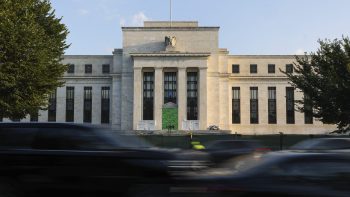So what’s Quantitative Easing anyway?
The Federal Reserve is expected to announce today that it will start reducing the amount of bonds its currently purchasing as part of Quantitative Easing. If the whole idea of Quantitative Easing is confusing to you, you are not alone. According to a recent survey by Reuters/Ipsos, most Americans don’t understand what QE is.
Of the 857 people surveyed 73 percent were unable to pick out the correct definition of Quantitative Easing.
Twelve percent thought it was a computer-assisted program used to manipulate the dollar and eleven percent thought it was part of Dodd-Frank — the regulatory changes that were enacted after the financial crisis.
To understand QE it’s important to understand that it essentially entails the Fed buying bonds to keep interest rates down, encourage lending and stimulate the economy.
If the Fed does reduce bond buying short-term interest rates will likely rise. But the Fed doesn’t want the public to think that the Fed is raising the official interest rate. This is really difficult for the Fed because the point of bond buying is to keep interest rates low. Therefore it’s logical that by buying fewer bonds the interest rates would go up.
But the Fed doesn’t want the public to think that it is tinkering with the official interest rate, as opposed to market interest rates. Since tapering means that the Fed will buy fewer bonds, the indirect result of that is that market interest rates will probably go up.
“Bernanke will try and stress that even though the Fed will be buying fewer and fewer bonds, it’s not going to be raising interest rates anytime soon,” says Paul Dales, senior U.S. economist at Capital Economics in London.
One analyst, Drew Matus at UBS Securities says that even people who do understand Quantitative Easing don’t necessarily agree on how it works.
“So we are even at a disagreement about on a very fundamental level about what exactly today means for the future of Fed policy as we move forward.”
The one thing that most economists agree on is that the Fed won’t reduce bond buying by more than $15 billion per month. The Fed currently spends $85 billion per month.
Click the audio player above to hear more. And to listen to David’s conversation with Drew Matus of UBS Securities, click here.
There’s a lot happening in the world. Through it all, Marketplace is here for you.
You rely on Marketplace to break down the world’s events and tell you how it affects you in a fact-based, approachable way. We rely on your financial support to keep making that possible.
Your donation today powers the independent journalism that you rely on. For just $5/month, you can help sustain Marketplace so we can keep reporting on the things that matter to you.


















